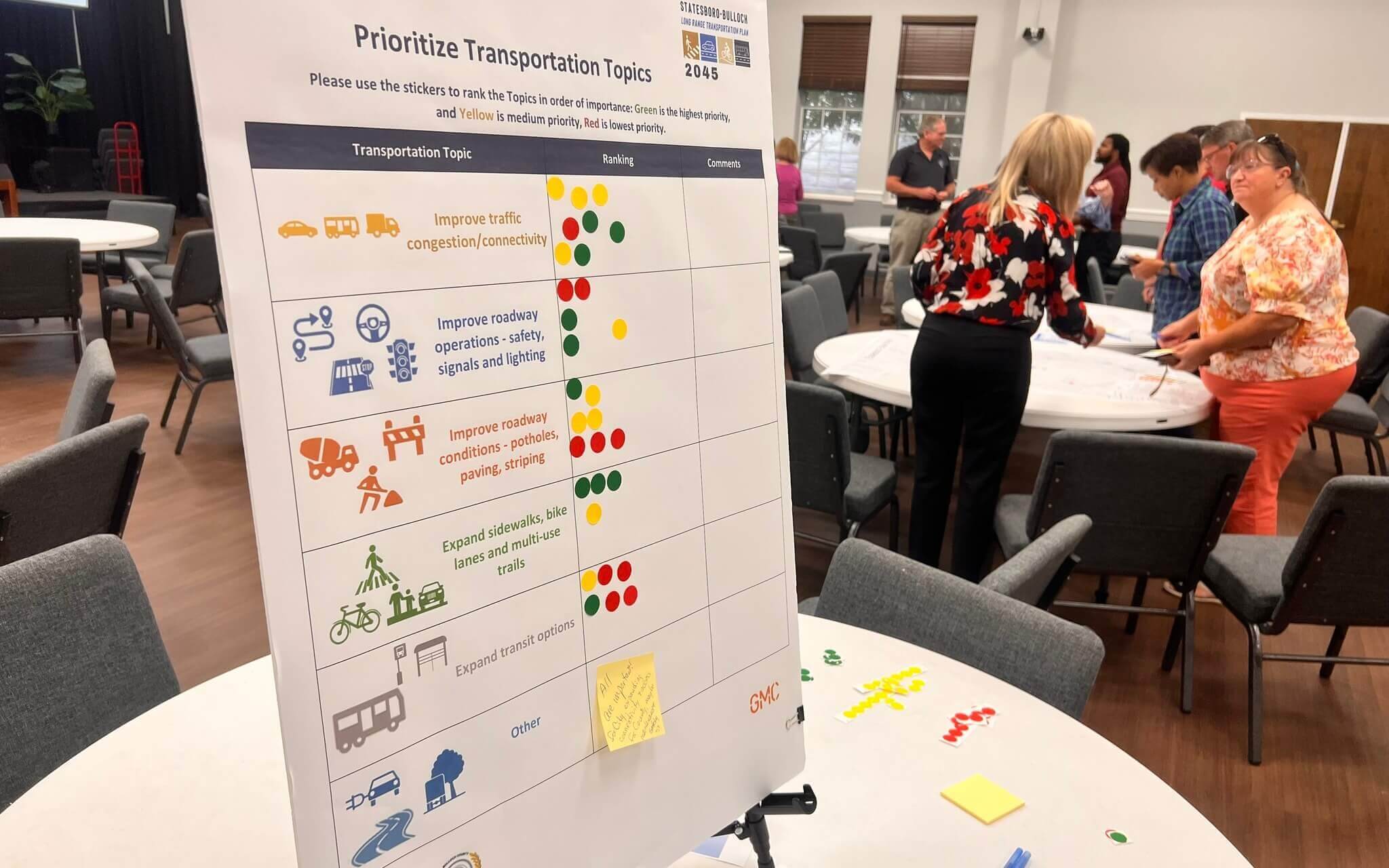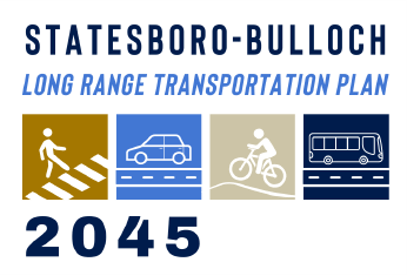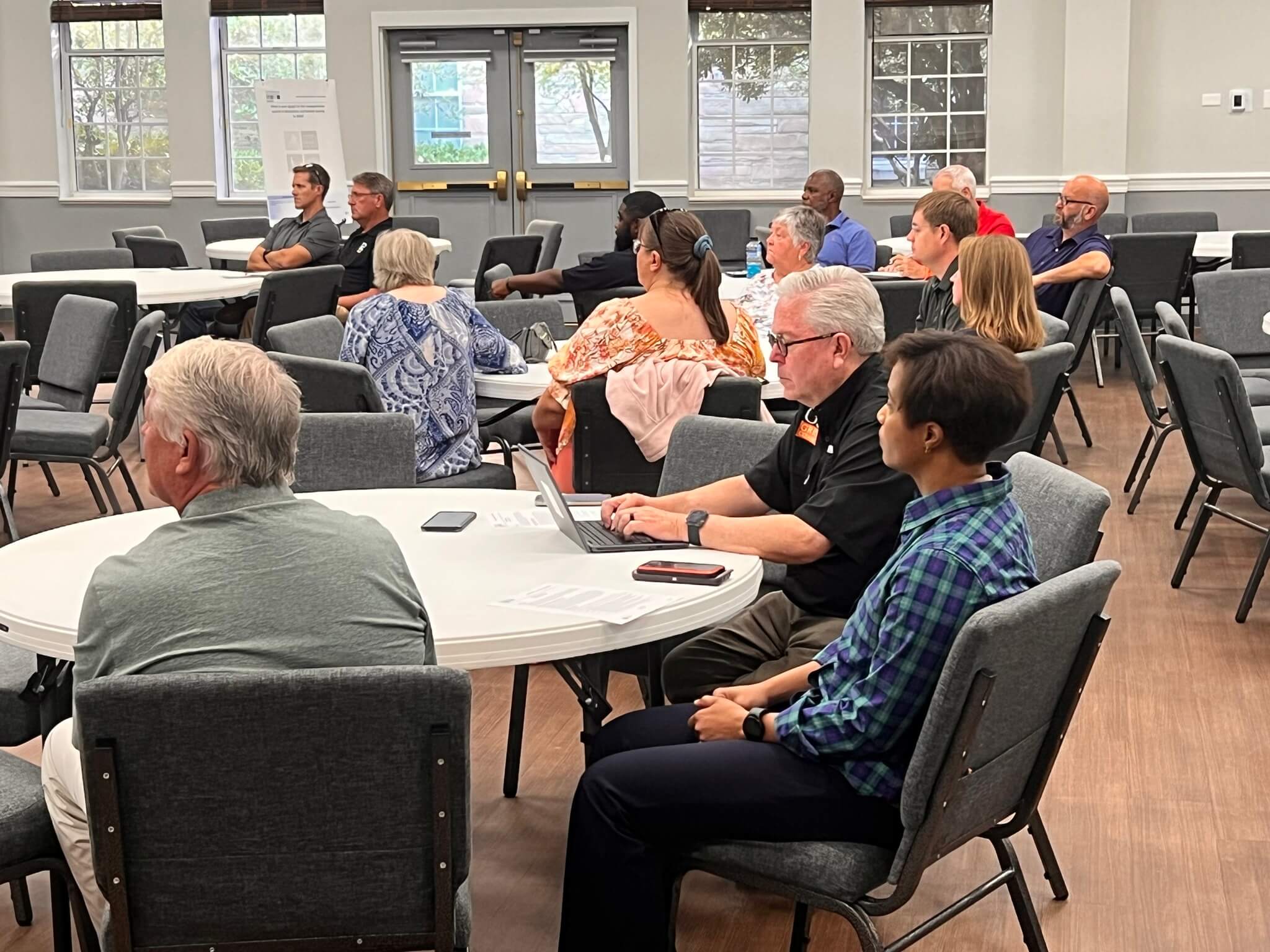Statesboro and Bulloch County kick off long-range transportation plan
October 12, 2023 · Community, Projects

Long-range transportation planning begins for Bulloch and Statesboro
Goodwyn Mills Cawood (GMC)’s Planning team is partnering with the Bulloch County Board of Commissioners and Statesboro City Council to develop the Statesboro Bulloch County Long-Range Transportation Plan. The last time the Bulloch County and Statesboro transportation plan of this type was updated was in 2009. Many projects from that plan have been completed, so local planners, such as the city and county engineers, need a list of new projects to look at for the next 20 years.
GMC Planners Kalanos Johnson and Glenn Coyne, FAICP, along with Augusta Office Leader Rhonda Davis, PE, led the first in-person, public meeting, welcoming input from citizens on what they see as the current and future transportation needs for Statesboro and Bulloch County through interactive exercises. The meeting also included a presentation on the scope of the project and an explanation of how the public could provide input.

“This is a joint effort between the city and the county, and we think that’s really important,” said GMC Senior Planner Glenn Coyne, the project manager. “A lot of us who work around the state know it can be really hard to get city and county to work with each other, but that’s happening here, and we’re really happy about that.”
Locals did not have to be present at the meeting to have their voice heard about transportation needs and priorities. The online survey was accessible during the meeting through a scannable QR code, but the survey will remain open through October on the plan website.
One of the 24 questions has drivers rank their three greatest challenges to driving in Bulloch from a list of seven possible challenges, not only including congestion, safety concerns and road condition problems such as potholes and debris, but also limited access to electric vehicle charging stations.
One question many participants asked was whether the effects of Hyundai Motor Group’s Metaplant America, the electric vehicle and battery manufacturing complex under construction in northern Bryan County, will be factored into the transportation plan.
“Fortunately, our firm just finished the Bryan County Comprehensive Plan they’re going to adopt in October, so we spent a lot of time thinking about that very question, not only in Bryan County but Effingham, Bulloch and really, going up I-16 farther,” Coyne said. “There are some very serious impacts that are coming from that. I’m not sure folks are fully aware as to how big that is, and then every day there is more being added.”
The full-range planning is expected to take account of traffic growth as the region becomes a hub of electric vehicle manufacturing. In the nearer term, city and county staff hope to extend their cooperation from the planning process to address immediate traffic concerns such as looking into the rapidly developing areas along Cawana and Burkhalter roads through Burkhalter’s intersection with Fair Road.

“The way that the recommendations are structured, there are short-term, medium-term and long-term,” Coyne said. “We want to make sure you have some projects you can do right now, but we want to make sure you have projects that can handle that future growth that is coming.”
Input from the local public will not be the only thing guiding the consultants in the planning. Modern Mobility Partners, a subcontractor to GMC, is expected to use an analytical process called travel demand modeling to look at alternative scenarios for traffic growth and transportation needs and how these could be affected by various projects. Traffic counts and Georgia Department of Transportation data will be used in the process, Coyne said.
Working in tandem with GMC, city and county officials hope to continue planning with a second public workshop meeting in February 2024. By August 2024, the goal would be to produce detailed action plans for road improvement projects and potentially also for projects to benefit alternative transportation modes such as walking and cycling, extending through 2045. Projections for funding of projects from federal, state and local sources is also expected for a five-year first stage.